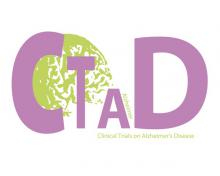MIAMI BEACH, FLORIDA, USA, February 20 2019. “Loss of muscle is extremely common in older people and leads to poor outcomes,” said John Morley, Dammert Professor of Gerontology and director of the Division of Geriatric Medicine at St. Louis University Medical Center. Speaking today at the International Conference of Frailty and Sarcopenia Research (ICFSR) in Miami Beach, Florida, Dr. Morley said, “we need to have older people screened for muscle loss and treated, with the primary treatment being exercise.”
To achieve this, international clinical practice guidelines for sarcopenia screening, diagnosis, and management are needed, said Dr. Morley. He led a discussion of evidence-based recommendations for such guidelines, which were published last year by an ICFSR Task Force. The Task Force was led by Elsa Dent, adjunct lecturer in the School of Population Health at the University of Adelaide, Australia. Also participating in the discussion were Alfonso Cruz-Jentoft, chair of the Geriatric Department of the Hospital Universitario Ramón y Cajal in Madrid, Spain, and lead author of the recently published revised European consensus on definition and diagnosis of sarcopenia; and Jürgen Bauer, professor of geriatrics at the University of Heidelberg, Germany.
At least eight definitions of sarcopenia had been proposed worldwide, according to Dr. Morley. Originally described as age related loss of muscle mass, the definition was later expanded to include functional deficits. To develop consensus international guidelines, the ICFSR task force examined evidence and made recommendations related to defining sarcopenia; screening and diagnosis; intervening with physical activity, protein supplementation, vitamin D supplementation, and anabolic hormones; developing new medications; and conducting research. Consensus was reached among 38 of 39 Task Force members.
The Task Force advocated for the use of a rapid, five-item questionnaire called the SARC-F as a screening tool and conditionally recommended using DXA as a measure of low lean mass, although Dr. Morley and others acknowledged that questions remain regarding the validity of this approach. An alternative diagnostic approach advocated by the Society on Sarcopenia, Cachexia, and Wasting Disorders and other expert groups uses assessments of grip strength and gait speed as diagnostic tools.
To treat sarcopenia, the Task Force recommended resistance based exercise. Protein supplementation was also conditionally recommended despite research presented earlier in the day suggesting that protein supplementation may not result in improved muscle mass or strength. Similarly, the Task Force found a lack of evidence to support recommending Vitamin D supplementation or other treatment options; and they made no recommendation regarding the use of anabolic hormones.
While there remain some disagreements about specific approaches to screening, diagnosing, and managing sarcopenia, what all participants at the session seemed to agree on is the urgency of reaching international consensus on best clinical practices. “If we don’t do this now, we may lose a lot of interest in the field,” said Dr. Bauer. “We have to have simple messages sent out in a meaningful way.



